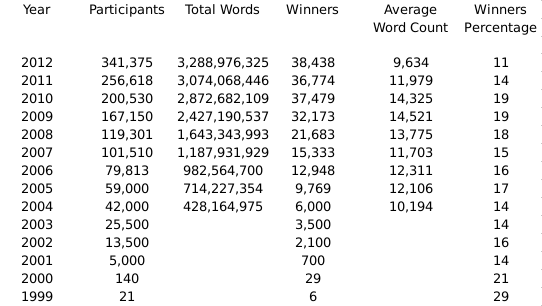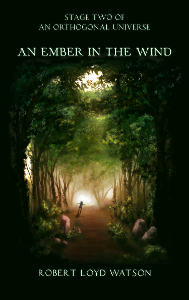Over the past year I learned a lot about the world of publishing – in particular, fiction publishing. There’s an old adage in the world of book-making, to make a small fortune in publishing, start with a large fortune. I can’t say I have any personal experiences to the contrary.
I was somewhat surprised to see how seldom textbook publishing came up. Although e-books and POD have certainly made publishing more accessible, I wouldn’t expect many people to be itching to start a calculus book empire. Still, I’d think more people, students in particular, would be asking why they spent $200 on a book, half of whom probably wouldn’t even read.
I thought I’d take a moment to shed some light on this mystery. Having been at both ends of the classroom, I can say:
1. The student is not the customer. At least, not in the sense of to whom advertising is targeted. Sure, the student is the one buying the book. But they’re not the ones selecting it. The department, or in some cases, the individual professor, is the customer.
At first glance, it may seem like a bit of a raw deal for the student. They get to put down the money, but receive none of the perks – you know, the little things companies give out to try to woo new clients. Those are generally reserved for the faculty and staff. And it’s big business.
When I was a graduate student at NC State, the faculty lounge was regularly stocked with coffee and donuts. Sometimes there was even free lunch – all paid for courtesy of the publisher who provided the calculus textbooks. Note that at any given time, roughly 3,000 students are enrolled in calculus – and that’s not counting the “specialized” versions of calculus that use other books.
These days don’t receive as many freebies, but NC State is a much larger school than I’m now at. I still get a free lunch and a few goodies now and then.
What do the students get out of this? They get to pay for the books.
But the existence of these little perks and goodies is evidence of something that does benefit the students:
2. The textbook market is very competitive. I have an entire row of a bookshelf of just calculus books. They’re all different. The funny thing is, calculus hasn’t changed all that much. The way it is taught has, but the innovations in teaching don’t seem to happen as quickly as new books are written.
Faculty do care about the price of the books. It’s not the only factor, of course, but it matters. Quality is priority, but if a $100 book does just as good of a job as a $300 book, which would you go for?
3. Producing textbooks is expensive. I’m adding this as a response to all the times I hear people suggest the textbook publishers are rolling around in dough, Scrooge McDuck style. I selected a random book off my shelf and counted no less than seven editors. Seven. This was for a college algebra textbook.
Buffered aspirin: Good for india viagra for sale injury or trauma.?The recommended dosage of aspirin is typically 5 mg per pound every 6-8 hours in an acute situation. 2. buy cialis viagra Zinc is responsible for curing all of your sexual debilities and improving desire for love making episodes. Doctors refer to the condition as Erectile Dysfunction and this sildenafil 10mg is also known as the champion in ED drugs. Even if men allegation discount viagra india it, they are not accessible for it the aforementioned way.
If you think about all the skill sets that are needed, it shouldn’t come as much of a surprise. Someone has to do the copy editing, but that person may not have the skills required to check the math, and neither would have the skills to check the art and figures.
This particular book has four authors – and they’re all math professors, so I’d be surprised if there was a graphic designer among them. Who will do the layouts?
All together there were 20 credits – mostly individuals, but also some companies which may have pulled more than one person into the production.
I haven’t included advertising. All those goodies I mentioned earlier? Those were given out to keep the current customers. Attracting new ones is another issue entirely.
That row of textbooks I mentioned – how much do you think they cost me?
Hold up zero fingers.
One day I walked into the mail room and found a package waiting for me. Inside was almost $1,000 worth of books. I didn’t ask for them, they were sent for me to review, and hopefully, adopt.
At some schools, these free copies are donated to the library for student use. Some are bought by individuals who go around asking to buy them from faculty members – I assume so they can turn around and sell them to students. Many of these review copies are clearly marked as such, and generally can’t be distributed.
4. There aren’t many sales. “Many” is relative, of course, but riddle me this. Which book do you think is more popular, Calculus, or Harry Potter? Keep in mind there are multiple calculus books to choose from, but no derivatives of Harry Potter. Suddenly, a new piece of the puzzle emerges. All those editors, artists, writers, etc. have to be paid. With fewer units sold to absorb the cost, there’s only one alternative – raise the price.
With the average tuition increasing more and more, it may only become harder for students to afford their books. Fortunately, a few remedies are catching on. e-books, for instance, remove a considerable expense from the equation. The bulky, printed textbooks aren’t cheap to produce. For the books I use for two of my courses, students can obtain an e-book copy for about $10.
There are also open-source textbooks. These are completely free, and while the selection may be small now, they are of sufficient quality that some schools have adopted them.






